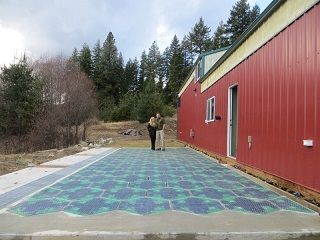From Guest Blogger Dixie Somers: Five Amazing Projects for Renewable Energy You Probably Didn't Know Were Possible (But Are Currently Underway)

Waves to Energy
Everybody has heard of wind farms, but farming waves is a different story. The Aguçadoura Wave Farm off the shores of Portugal was originally tested in 2008. The machine uses floating structures that are pushed and pulled by the waves. This motion works hydraulic motors which turn electric generators. Producing 2.25 megawatts, the wave farm produced enough energy to power 1,500 homes. Since then, Pelamis Wave Power has produced prototypes off the coast of Germany and Shetland. As of November 2014, the company has earned additional funds to expand its project throughout Scotland.
Landfill gas into Energy
In the past, you’ve probably seen pipes sticking up out of old dumps so gas can escape. As garbage decays underneath, methane gas and carbon dioxide are released. In Whittier, California, the world’s largest gas plant sits atop the old Puente Hills landfill. The 20 year old Los Angeles dump towers 500 feet into the air and covers 700 acres. As of 2013, all that escaping gas now produces 50 megawatts of power. A similar facility was recently built in Incheon, South Korea. Professionals from LFG Technologies have been specializing in landfill to gas engineering and designing for decades, and suggest that this technology will provide powerful energy for years to come.
Solar Roadways
Roadways bake in the sun all day, so why not make them into solar power stations? This is exactly what Solar Roadways Incorporated thought when they launched their Indiegogo campaign in April 2014. With a goal of 1 million dollars, the campaign earned 2.2 times that amount. Their roads can even power the automobiles driving over them. They also can generate their own heat to melt snow and ice. The panels are made of entirely recycled materials and can withstand even the heaviest trucks. Testing is currently underway in Idaho, but if Solar Roadways replaced all the roads in the continental United States, it would produce 21 million megawatts every hour.
Dog-Powered Parks
In big cities, people love their dogs and their dog parks. Park Spark in Cambridge, Massachusetts has developed a way for dog poop to power the park’s lamps. Using biodegradable bags provided to visitors, owners pick up their dog’s poop and place it inside a large tank. Inside, microorganisms break down the solids into a gas, methane, which is then used to power nearby lighting. The company then applied the same technology to heat a home in the Netherlands using cow manure. They are looking to expand their project to six more major cities in the next year.
Regulus Solar Field
Lamont, California is home to a 737 acre abandoned oil field. Baked in the sun and pumped of its natural resources, the land sat unused and dried up. That is, until September 2014 when it was bought by Google who is currently constructing an 82 megawatt solar power field. The project, a $145 million joint operation with TerraForm Power, expects to produce enough energy to power 10,000 nearby homes. Construction began in December, making it the 17th renewable energy project started by Google.
Combining all the innovations in renewable energy that come out each year, scientists expect the industrial world to be entirely powered by clean methods by 2050. Already, funding for new energy projects outweighs fossil fuel development 12 to one. While there is still a lot of work to be done, the future looks very bright and very clean.
